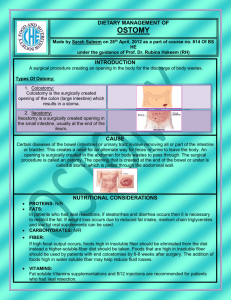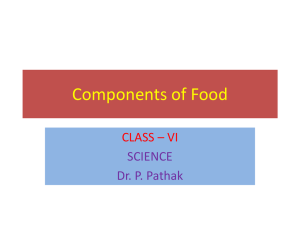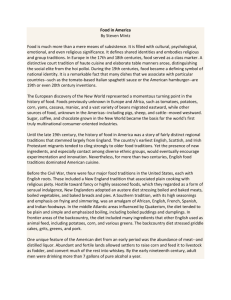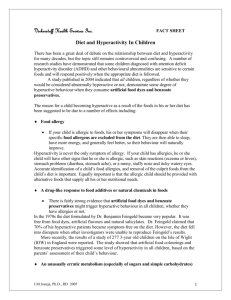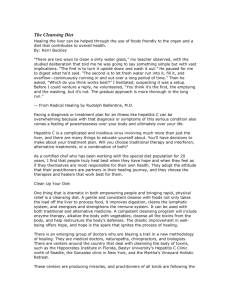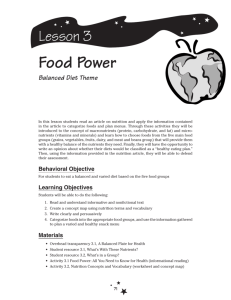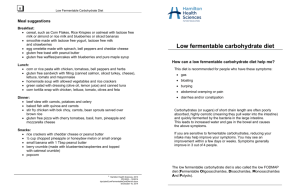Diet and Eating Habits in the Stone-Age
advertisement
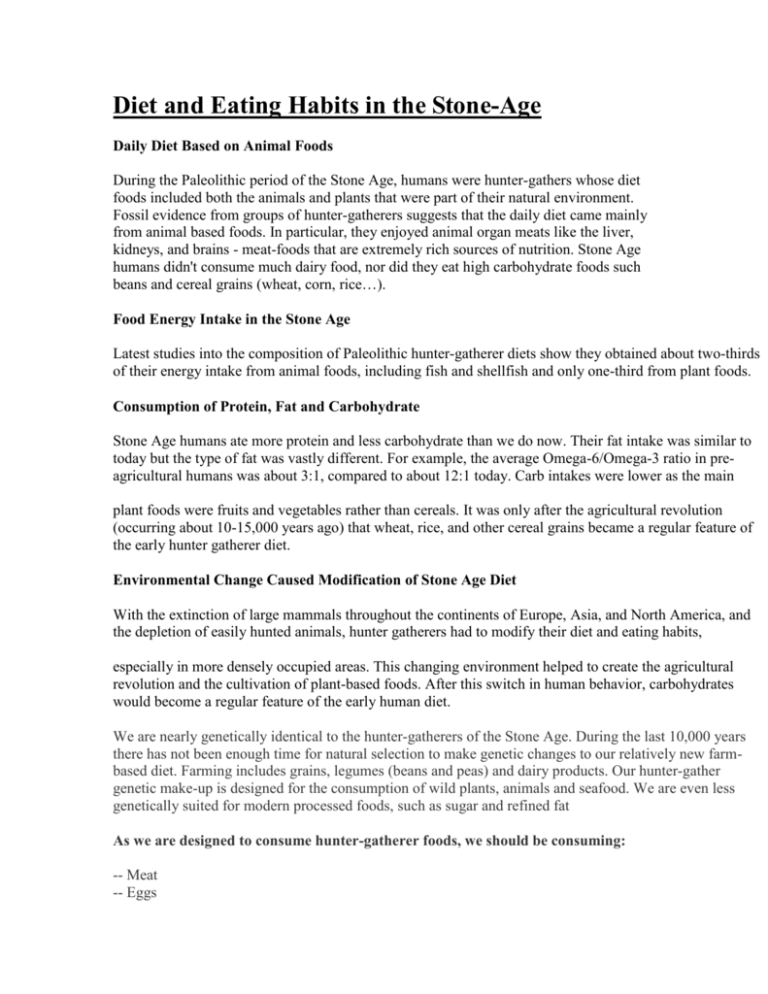
Diet and Eating Habits in the Stone-Age Daily Diet Based on Animal Foods During the Paleolithic period of the Stone Age, humans were hunter-gathers whose diet foods included both the animals and plants that were part of their natural environment. Fossil evidence from groups of hunter-gatherers suggests that the daily diet came mainly from animal based foods. In particular, they enjoyed animal organ meats like the liver, kidneys, and brains - meat-foods that are extremely rich sources of nutrition. Stone Age humans didn't consume much dairy food, nor did they eat high carbohydrate foods such beans and cereal grains (wheat, corn, rice…). Food Energy Intake in the Stone Age Latest studies into the composition of Paleolithic hunter-gatherer diets show they obtained about two-thirds of their energy intake from animal foods, including fish and shellfish and only one-third from plant foods. Consumption of Protein, Fat and Carbohydrate Stone Age humans ate more protein and less carbohydrate than we do now. Their fat intake was similar to today but the type of fat was vastly different. For example, the average Omega-6/Omega-3 ratio in preagricultural humans was about 3:1, compared to about 12:1 today. Carb intakes were lower as the main plant foods were fruits and vegetables rather than cereals. It was only after the agricultural revolution (occurring about 10-15,000 years ago) that wheat, rice, and other cereal grains became a regular feature of the early hunter gatherer diet. Environmental Change Caused Modification of Stone Age Diet With the extinction of large mammals throughout the continents of Europe, Asia, and North America, and the depletion of easily hunted animals, hunter gatherers had to modify their diet and eating habits, especially in more densely occupied areas. This changing environment helped to create the agricultural revolution and the cultivation of plant-based foods. After this switch in human behavior, carbohydrates would become a regular feature of the early human diet. We are nearly genetically identical to the hunter-gatherers of the Stone Age. During the last 10,000 years there has not been enough time for natural selection to make genetic changes to our relatively new farmbased diet. Farming includes grains, legumes (beans and peas) and dairy products. Our hunter-gather genetic make-up is designed for the consumption of wild plants, animals and seafood. We are even less genetically suited for modern processed foods, such as sugar and refined fat As we are designed to consume hunter-gatherer foods, we should be consuming: -- Meat -- Eggs -- Insects (and larva) -- Seafood (fish and shellfish) -- Root vegetables that can be eaten raw -- Fruits -- Nuts -- Seeds -- Herbs and spices -- Vegetables -- Honey, maple sugar, date sugar (natural sugars) We are NOT designed to eat: -- Grains -- Peanuts, beans, peas, cashews, tofu, soy milk, flour (legumes) -- Root vegetables that cannot be eaten raw (potato, tapioca, parsnips, sweet potato, yam) -- Refined sugars -- Separated fats and oils -- Foods that contain yeast -- Juices, sodas, coffee -- Alcohol -- Dairy products -- Processed meats -- Salt



